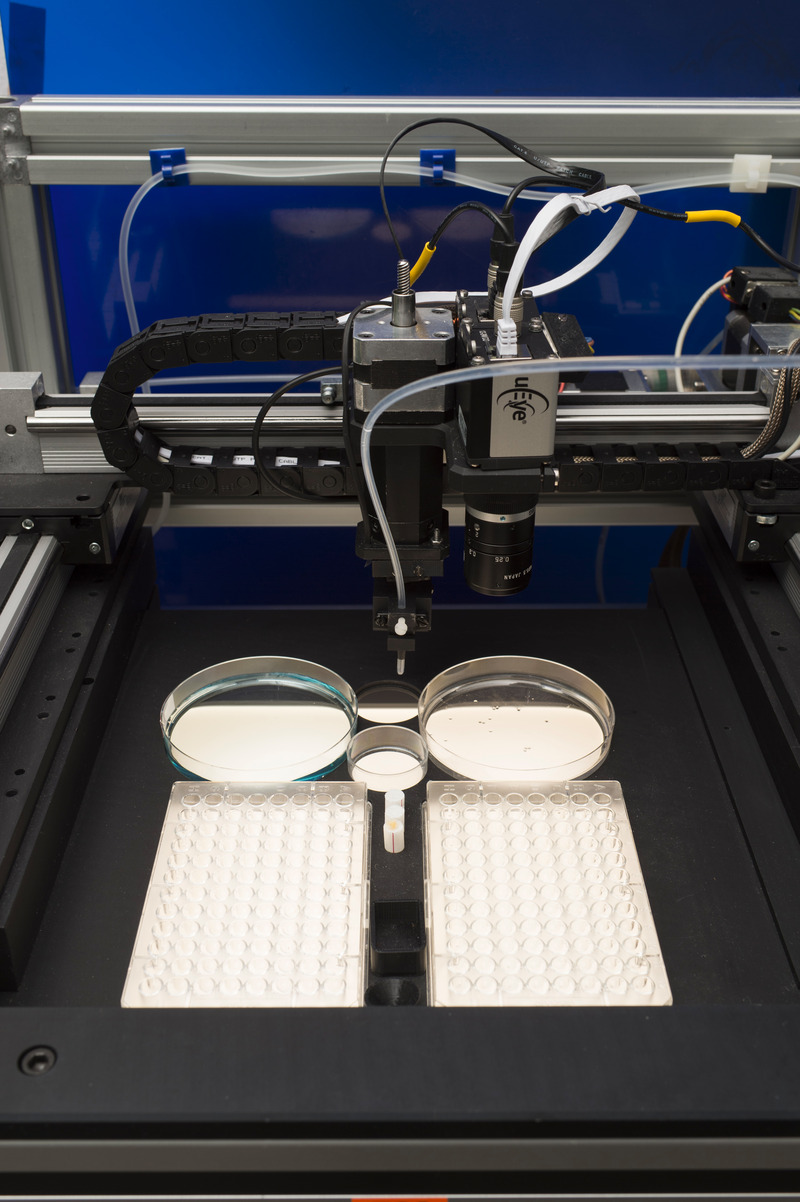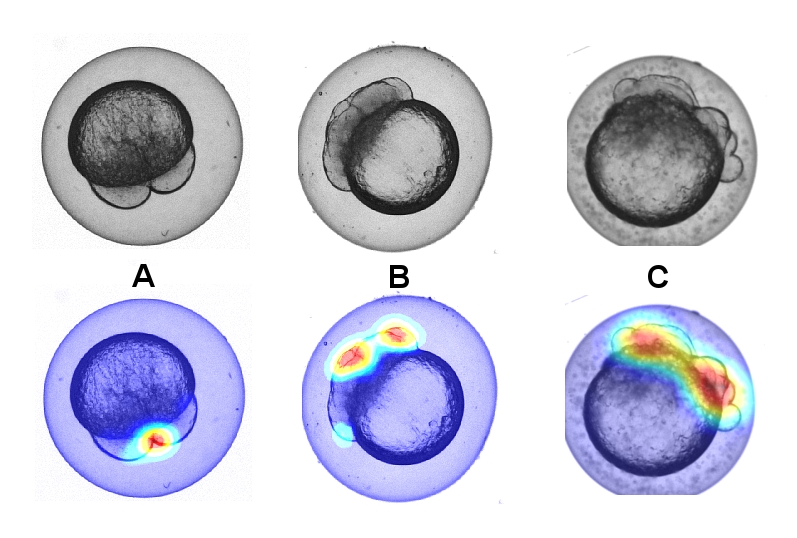
Biohandling
- Contact:
- Project Group:
- Partner:
KIT Screening Center of the European Zebrafish Resource Center (EZRC), KIT Institute of Biological and Chemical Systems – Biological Information Processing (IBCS-BIP).
- Startdate:
2018
Model organisms such as the eggs of the zebrafish (Danio rerio) help to better understand the development of tumors and genetic diseases and to treat them more effectively. In order to find new suitable drugs or methods for treating these diseases, the sensitive eggs must first be sorted and then microscoped. Both can be automated through the use of specially developed laboratory robots. In addition, by coupling fluorescent dyes, cells can be specifically stained and made more visible. Subsequently, any changes from the normal development of fish eggs must be detected and classified using AI. The robots, fluorescence microscopes and analysis software required for this are being developed at IAI.

The figure shows in the upper row the first cell divisions in the zebrafish egg.
The bottom row shows the associated heat maps of how a neural network weights
image regions on the photos for classification.
References:
-
Breitwieser, H.; Dickmeis, T.; Vogt, M.; Ferg, M.; Pylatiuk, C.: Fully Automated Pipetting Sorting System for Different Morphological Phenotypes of Zebrafish Embryos. SLAS TECHNOLOGY: Translating Life Sciences Innovation, 23(2):128–133, 2018. doi:10.1177/2472630317745780
-
Neukum, A.; Bartschat, A.; Breitwieser, H.; Strähle, U.; Dickmeis, T.; Pylatiuk, C.: Automated Classification of Fertilized Zebrafish Embryos. Zebrafish, 16(3):326–328, 2019. doi:10.1089/zeb.2019.1728

